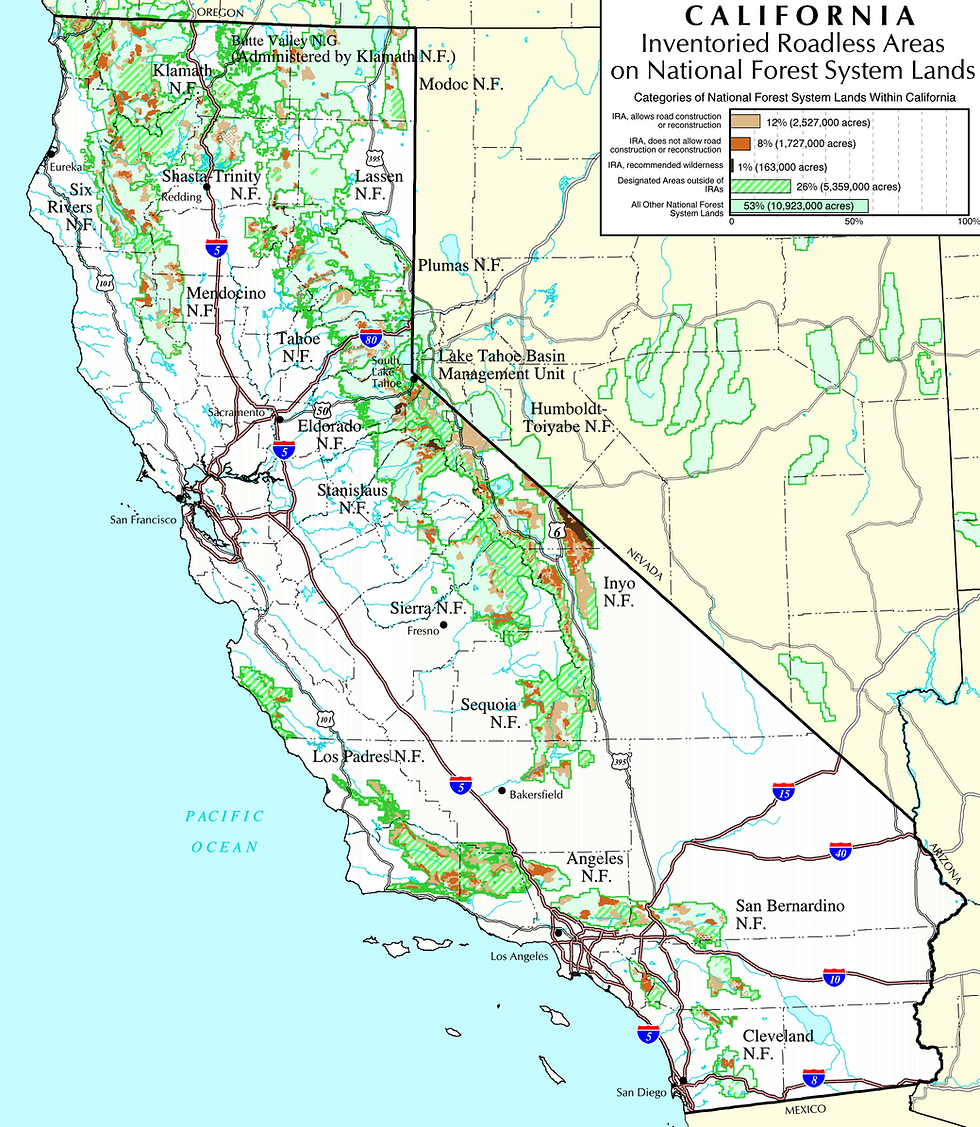Hooting and Howling for Owls and Wolves in California
- Oct 12, 2012
- 2 min read
As autumn weather sweeps through the hills, hinting at the first rains on the coast and the first wisps of snow in the high country, I find myself listening for the gentle hooting of owls and the joyous howling of wolves returning to their ancestral homelands in California.
Recently, the California Fish and Game Commission made two decisions that are cause for more hooting and howling in Wild California. First, the commission voted to accept EPIC’s petition to list the Northern Spotted Owl under the California Endangered Species Act (CESA), triggering an evaluation by the Department of Fish and Game that will be delivered to the commission in advance of a public hearing in February 2012. The State of California has never acted to protect the Northern Spotted Owl under CESA, despite clear declines throughout the species range in California, as well as the remainder of the range. It is now time for the State of California to recognize its duties under CESA, and based on the overwhelming evidence, act swiftly to protect the Northern Spotted Owl. Without a more holistic view of species recovery and landscape-scale conservation, the owl is likely to go extinct in the foreseeable future. Within California alone, EPIC has identified numerous logging proposals on both private and public lands that will destroy or degrade spotted owl habitat. For example, on private lands owned by Sierra Pacific Industries, EPIC has identified over 27 timber harvest plans that are currently ongoing or proposed that will destroy over 7,000 acres of spotted owl habitat. Notably, the ongoing destruction of Northern Spotted Owl habitat by Sierra Pacific Industries is taking place without an incidental take permit as required under the ESA. EPIC has formally notified Sierra Pacific Industries with letter of intent to sue over violations of the ESA. Meanwhile, state and federal agencies have been aware of this ongoing harm, but have failed to act. The overall habitat destruction on Sierra Pacific Industries and other private lands in northern California has resulted in the abandonment of dozens of historic spotted owl territories. Those that remain are mostly all severely deficient in suitable habitat, particularly nesting and roosting habitat made up of older forests. With the Department of Fish and Game evaluation process, EPIC intends to bring these injustices into the light of day.
Second, the commission voted to move forward with a full status review for the Gray Wolf under CESA, to determine whether to protect the species in response to a petition from EPIC and our allies. While the status review is conducted over the next year, the Gray Wolf is listed as a “candidate species,” and therefore is entitled to full protections under CESA. The first wild wolf in the state in over 80 years, a lone male named “Journey” or “OR7” by supporters and biologists, still roams the wild country near Lassen National Park and adjacent national forests. After nearly a year of residency, Journey appears intent on staying, jaunting over hundreds of miles and getting a good handle on the lay of the land. As several forest fires burned over the summer, Journey’s explorations took him right to the edge of the fire lines, presumably drawn by the presence of deer and elk escaping the flames. While Journey has staked out territory in California, his relatives back in Oregon have been successful in forming new packs and producing another promising generation of new pups. The future of wolves in California depends on these pups in Oregon, and their attempts to make a living in sometimes hostile landscapes. The U.S. Fish and Wildlife Service has announced intentions towards stripping away the protections of the federal Endangered Species Act from wolves. Based on this distinct fear of losing federal protections, EPIC joined with several conservation allies in petitioning to add the gray wolf to the list of protected species under the California Endangered Species Act.





Comments